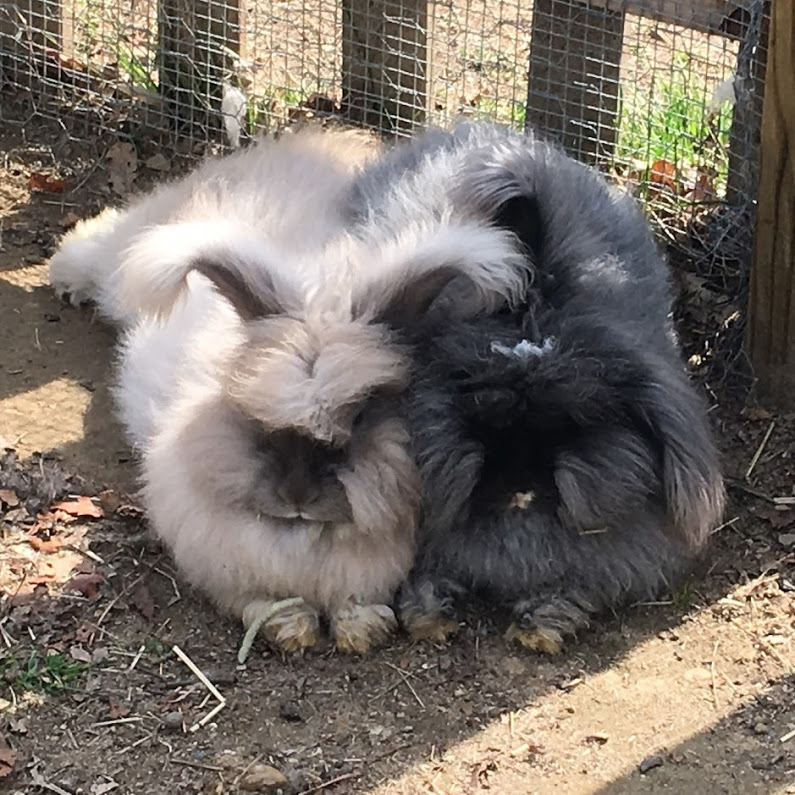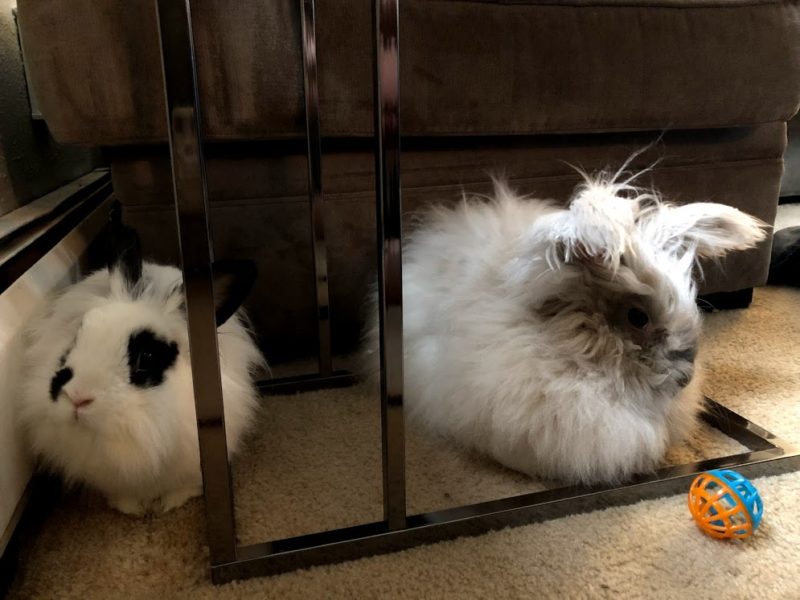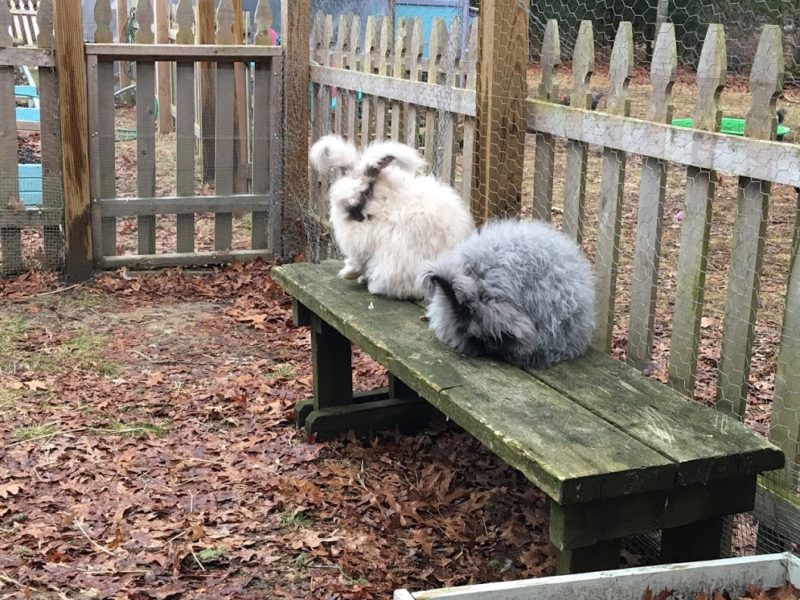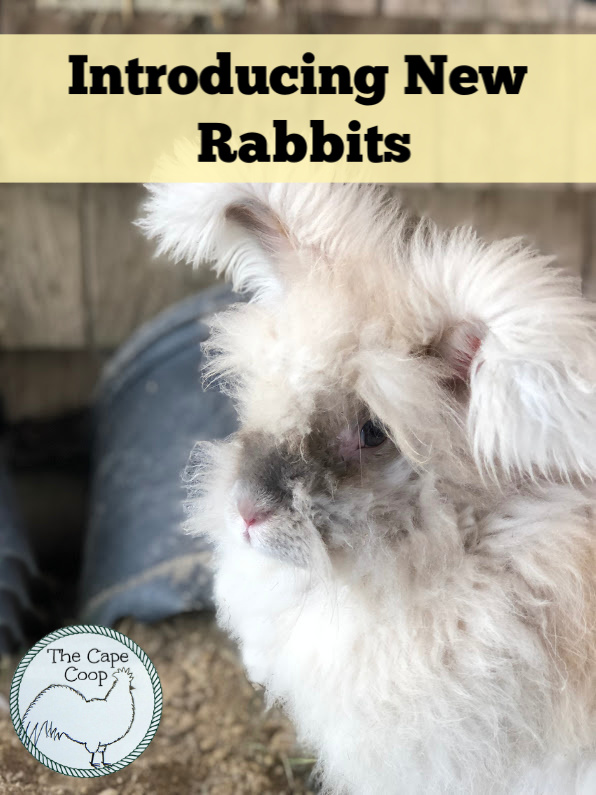---------------------------------------------------------
Rabbits are very social creatures and if at all possible should always be kept with other bunny friends. But how can you introduce two future Bunny Best Friends? Rabbits might not like living alone, but it doesn’t mean introducing new rabbits is easy, they are also quite territorial. It’s best done slowly so each rabbit has a chance to get used to the idea with minimal fighting. click here to read more about colony raising rabbits
Spaying & Neutering
Unless you are planning on breeding your rabbits, getting them spayed or neutered is a good idea. After they are altered, many find their rabbits are calmer and more loving with the strong urge to mate gone. It can also make them less likely to have destructive or aggressive behaviors. These are all very helpful traits when you are raising multiple rabbits in the same space.
Females can usually be spayed when they are around 5-6 months old. Males can be neutered much earlier, around 2-3 months old. The rabbits should be altered at least a month before they are allowed to live in a colony setting. This will allow them to heal from surgery and allow the hormones to settle down and normalize.
Males can still remain fertile for a few weeks after surgery so definitely keep newly neutered males and unspayed females apart during this time.

Building your rabbit colony
In the wild, rabbits live in social groups called colonies in a series of burrows. A male/female pair would be a natural one to consider when bonding two rabbits as this is how they would live in the wild. Of course, if this is the route you go it is absolutely necessary to get the rabbits spayed/neutered unless you want baby bunnies every couple of months!
Female/female pairings also work really well and is the only pairing you should consider if your rabbits are not altered. This is the pairing that I have found usually has the least fighting. Even my unaltered females rarely fight.
Male/male pairs will work but can be the most challenging. It is easier if both rabbits are neutered. Unaltered male rabbits are the most likely to fight and display aggressive behaviors (but not all will). They are also the most likely to spray urine around the area to mark their territory – you don’t want two males competing for who can pee on the most stuff! That said I have several unaltered males living together in a buck colony. There is fighting sometimes, but it’s generally nothing more than chasing or possibly a little bit of lost fur. 97% of the time, they get along great.
Bonding rabbits when they are young (under 4-5 months) is by far the easiest way to go, but even adults can be successfully bonded.

How many rabbits can you keep?
This just depends on how much space you have and how much time you have to take care of them. You should plan on at least 20-30 square feet per rabbit. If you keep too many rabbits in too small a space they are going to get frustrated and fight. So go as big as you can with their enclosure!
A two-rabbit pair is the bare minimum so they always have a friend. Adding a third or even fourth rabbit can ensure even if one of them passes away, the others will still have a rabbit support network. But if you have the space and resources to care for them, rabbits will happily live in a colony with a dozen or more! Click here to read about setting up a rabbit enclosure
The first meeting
Put the new rabbit either in a separate cage inside the older rabbit’s space, or separate them with a gate. The goal is to get them to see each other and smell each other, but they can’t fight. If at all possible, do this in a neutral area. If your current rabbit feels like the new rabbit is invading her space, fighting is more likely. If you can’t make the space new, clean out and scrub down the cage or enclosure to try and eliminate the familiar smells.
Good signs to look for include sniffing each other through the cages, circling attempts, and making soft honking noises. If you see them laying down on their sides looking relaxed in each other’s company that is excellent!
The length of this introduction period really just depends on your rabbits. They all have individual personalities, just like humans, and some are naturally more friendly and accepting than others. It might be a few hours, it might be a week or more. On average it will take a day or two. The longest I’ve experienced was just over a month.

Step 2 – no cages
For the first meeting outside of their cages, find a space that is new to both rabbits so no one will feel they own it. Put the rabbits in the room about 6-7 feet apart and sit on the floor with them. If possible have some cardboard boxes & toys to explore and a couple of dishes of food in the room.
Hopefully, they will cautiously approach each other and do a lot of sniffing. This is the most likely thing to happen. Rabbits live in a hierarchy naturally, so they will need to establish who is going to be “in charge”. The dominant rabbit will circle the other and mount the other like they are mating. This has nothing to do with mating and will happen with both altered and unaltered rabbits, with mixed-sex and same-sex rabbits. It’s about dominance and it’s how they communicate so let it happen.
There is likely to be a bit of squabbling or chasing unless one rabbit is ready to accept dominance right away. Chasing and even brief nipping is fine, but they shouldn’t be fighting. Rabbit fighting is when they rush at each other, rear up on their back legs and punch, claw, and bite at each other. There are usually some angry noises happening when they fight.
If they fight, separate them immediately and give them a few more days in separate cages. Brush up on reading bunny body language with my post here

Living happily ever after
Permanent cohabitation will depend on how this first no-cage meeting goes. If they get along immediately, they aren’t defending the food bowls, and they are relaxing on their side near each other these are great signs. Cuddling up together is even better. Once you see them grooming each other, they are going to be fine. If no grooming happens in the first meeting, it’s a good idea to keep them separated when you can’t monitor them. Try again the next day.

Trouble in paradise – when fighting occurs
If your rabbits fight during the first meeting, they need a few more days in separate living areas. Keep them separate until you see signs of them relaxing in the other’s presence. When you are ready to try again, be armed with a towel and a spray bottle full of water.
When they fight, spray the rabbits with the water bottle. Hopefully, after a few squirts they will literally cool off. If they don’t stop fighting, toss the towel over one of the rabbits to break up the fight, then use the towel to gently scoop the rabbit up to put him away. Be very careful stepping between fighting rabbits, you don’t want to get injured yourself. Tossing a towel over one is an easy way to stop the immediate fight.
Have toys and boxes to distract them and have plenty of food and treats available. If there is a special treat your rabbit loves, only have it available when they are together. It will help your bunny associate good things with being with his new friend.
Teenage male rabbits tend to be the most aggressive (around 6 months or so), so if your bunny fits that description, they may just need a few months in a separate cage if they can’t get along.






Vicky McClure
Saturday 18th of January 2020
Where do I get rabbits like those and how much do they cost ? They are beautiful !
Liz
Sunday 19th of January 2020
Hi Vicky - the long haired white & long haired grey rabbits are both English Angoras, the white rabbit with the black spots is a Lionhead. Lionheads are a bit easier to find - start with your local animal shelter. Angoras you will probably have to find a local breeder. There are several types of angoras, you can read more about the different breeds here: https://thecapecoop.com/what-breed-angora-rabbit-is-right-for-you/ Try a google search for "angora rabbit breeders near me". They have really sweet temperaments and make great pets, as long as you are prepared for the grooming!